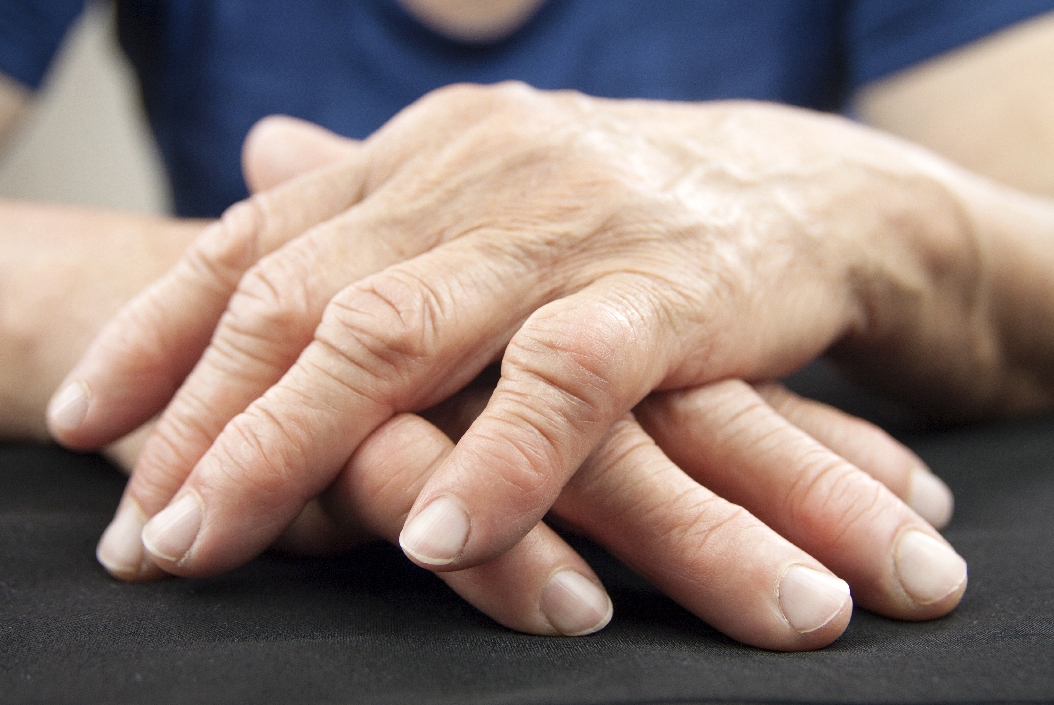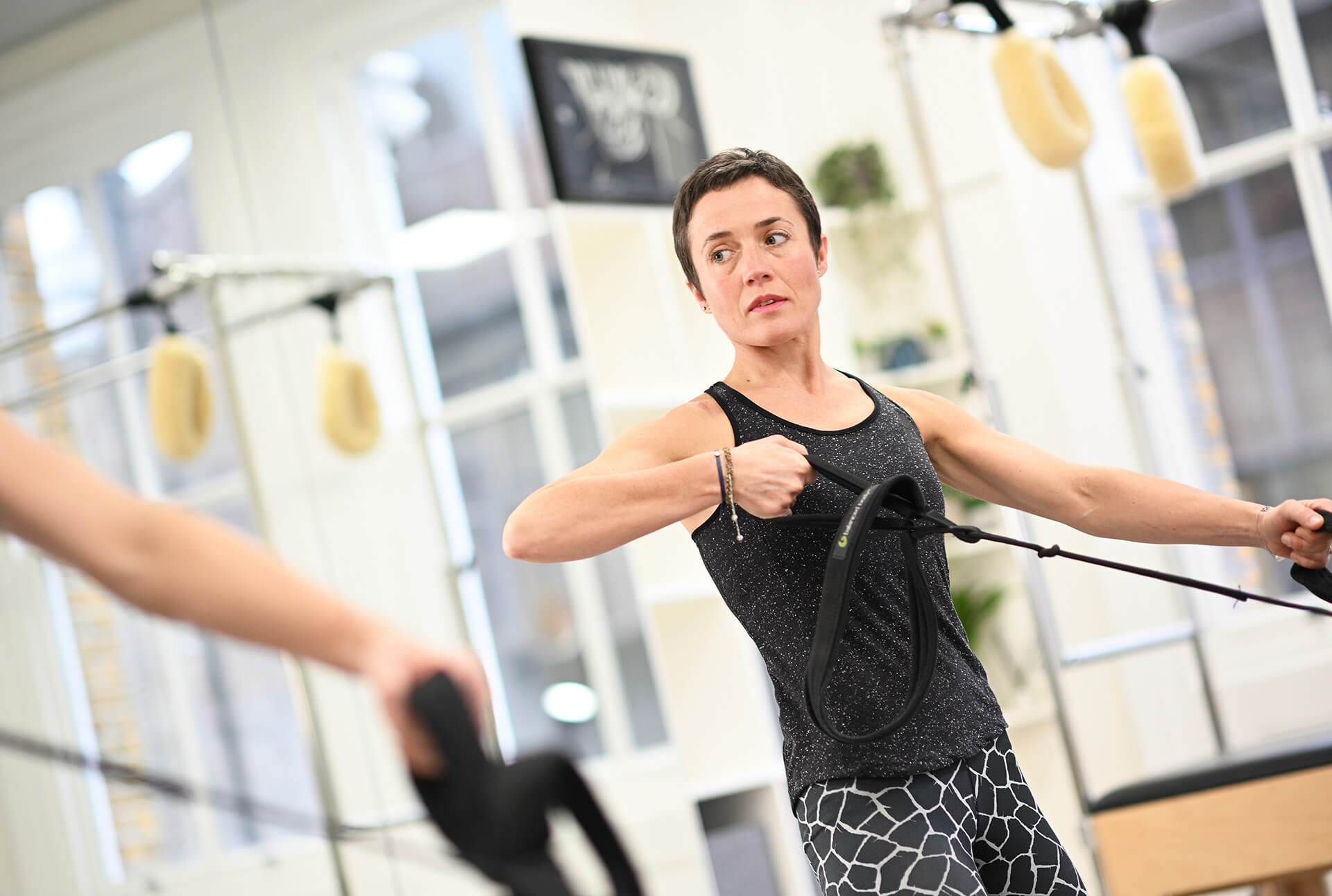Rheumatoid arthritis awareness week.
When we hear the word ‘arthritis’ we often think about wear and tear and ageing in the joints. However, this is called Osteoarthritis and is very common.
This year the National Rheumatoid arthritis society are trying to raise awareness to educate people that rheumatoid arthritis, or RA as we will be calling it. RA is an autoimmune disease which can impact people of all ages.
As part of our blog series this year, we are looking at the principles of Polestar Pilates. Here, we are going to look at exactly what is meant when we say auto-immune, and how it relates to principle 2, axial elongation and core control.
What is rheumatoid arthritis?
RA is part of a group of conditions which are known as ‘auto-immune’ diseases. This means the body’s immune system is not functioning as well as it could and can become too active. Mistakenly attacking your own body.
In RA the immune system affects the lining of the joints which causes inflammation. This joint inflammation is usually symmetrical, so affects both sides of the body. The joints can become painful and stiff if you stop moving around, for example if you sit down for long periods of time.
Although RA can affect other areas such as the internal organs, you will normally notice it first in the small joints of your hand. The first signs are generally, swollen knuckles which are quite often painful.
Am I at risk of rheumatoid arthritis?
About 1%, or 400,000 people in the UK have RA (NRAS). Women tend to be affected more than men and it usually develops between the ages of 40-60. However, it can develop at any age, even as young as 14. This is known as ‘early-onset’ RA.
The causes are not fully known but there is a genetic link and other factors such as certain viruses, infections or trauma. Sometimes a high stress event can also trigger the onset. Smoking is known to increase the likelihood of getting RA. Just another reason to give up now!
How is rheumatoid arthritis treated?
If you have been diagnosed with RA by your Doctor, then they will normally give you medication. These are used to reduce the inflammation and get the disease under control so that you can function normally. There are many different drugs used which we won’t discuss here, but for more information about your choices. You can contact your GP or look at advice on the NRAS website.
If you have been diagnosed with RA, you will get regularly reviewed to check that it is being managed and is under control. Ideally you will be seen as part of a team which may include a rheumatologist, nurse specialist, GP, Physiotherapist, podiatrist and clinical psychologist.

How can I help myself if I know I have rheumatoid arthritis?
There are lots of things that you can do to help to manage your symptoms. These include;
- Stay at a healthy weight – this will reduce the load on your joints and helps the medication you will be given to work better.
- Reduce your cholesterol – people with RA have increased risk of heart disease and strokes so it is important to maintain healthy levels. If you are not sure go to your GP and ask for a check-up.
- Stop smoking.
- Keep your vaccinations up to date – make sure that you are not putting undue stress on your immune system.
- Physical exercise – lots of research has shown that physical exercise can reduce your pain . Having this guided by a Physiotherapist will help you pace yourself through flare ups and they can advise you on the best exercises for you and your joints.
Can Pilates help rheumatoid arthritis?
Rheumatologists often recommend types of exercise that strengthen muscles around the joints to help to protect and offload them. This also helps reduce the pain and stiffness which is caused by the inflammation.
In Polestar we talk about axial elongation and core control coming together. This means that if you stack the bones and joints in their optimal position you will increase the amount of movement available at the area. In turn, the efficiency of your movement will improve and the chances of you overloading and injuring the joints will reduce.
Core control is about having the appropriate muscle strength and activation to be able to tolerate the loads that you put through the joints. Many people think of core control as just their abdominals. However, we think of this as a bigger picture and look at it as the entire system which stabilise your body as you move.
In Pilates we look to achieve axial elongation and core control in all the movements that we practice. The main aim is to find awareness and space in your body to be able to move freely and comfortably. This can be applied to anyone, at any level, and used to help reduce stiffness and pain in the joints. Once you have this awareness, we can then use the assistance and resistance of the Pilates equipment. Strengthening your muscles of core control around the spine, pelvis, hips, upper and lower body.
Pilates is safe to do if you have RA as it is non-impact movement which can be tailored specifically to you.
What can I try at home if I have rheumatoid arthritis?
You can try this exercise at home to try and increase awareness of your joint positions in weight bearing and try to give your body a little more space.
- In standing imagine your body is a stack of bones balanced one on top of the other. You must be able to maintain the vertical alignment as efficiently as possible.
- In standing close your eyes (if you feel unsteady you can do this with eyes open).
- Balance the pressure in the feet from front to back and side to side.
- Visualise a line from your ear to your feet and let the shoulders sit directly above the hips which are above the knees which are above the ankles.
- Imagine a string from the top of your head gently lifting you so that you can keep the spine lined up with this line, with your head balancing centrally on top.
- Once in position imagine a wind blowing you from side to side so that you must work on re-stacking your body.
- Then imagine the wind blowing you forwards and back, again re-stacking the body each time.
This is a lovely way to start the day by bringing your attention to your body and joints. Plus it is a good warm up for any exercise routine including Pilates as it gives you the beginnings of axial elongation and core control.
How do I find out more?
If you think you have any symptoms that could be RA, talk to your doctor. It’s important to get a referral to a rheumatologist at an early stage as this will help you manage your symptoms better. It can also help you to continue with your normal life. The sooner RA is diagnosed and the sooner treatment starts, the better the long-term outcomes are likely to be.
If you are wondering how Pilates can help manage your arthritis why not try Pilates in the City of London, or get in touch or book an appointment today.
Education is key:
These blogs are designed to give information to everyone, however, it is important to remember that everyone is different! If you have not seen one of our therapists and have any questions about injuries, what you have read or whether this may be useful to you, please just ask. We are more than happy to help anyone and point you in the right direction. Our biggest belief is that education is key. The more you understand about your injury, illness and movement, the more you are likely to improve.




